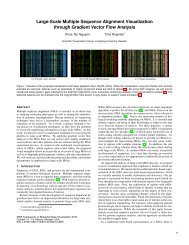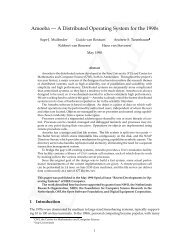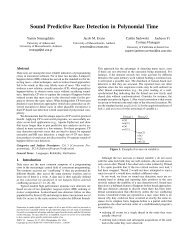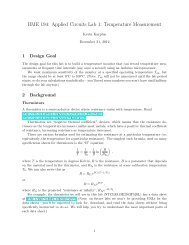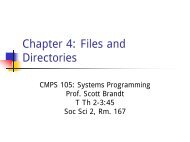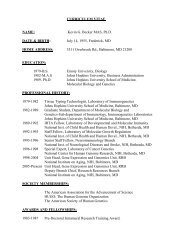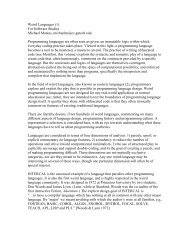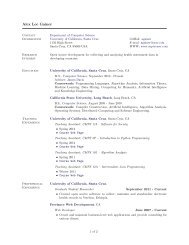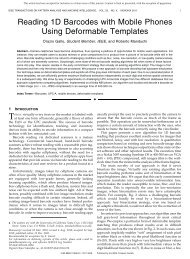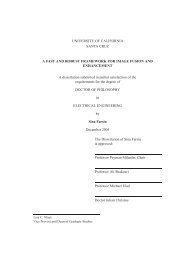Learning binary relations using weighted majority voting
Learning binary relations using weighted majority voting
Learning binary relations using weighted majority voting
Create successful ePaper yourself
Turn your PDF publications into a flip-book with our unique Google optimized e-Paper software.
LEARNING BINARY RELATIONS 271<br />
Kivinen, J. & and Warmuth, M. (1994) Using Experts for Predicting Continuous Outcomes. Computational<br />
<strong>Learning</strong> Theory: Eurocolt "93 pp. 109-120, Oxford University Press, Oxford, ISBN 0-19-853492-2.<br />
Littlestone, N. (1988) <strong>Learning</strong> when irrelevant attributes abound: A new linear-threshold algorithm. Machine<br />
<strong>Learning</strong>, 2(4): pp. 285-318.<br />
Littlestone, N. (1989) Mistake Bounds and Logarithmic Linear-threshold <strong>Learning</strong> algorithms. PhD thesis, U.<br />
C. Santa Cruz.<br />
Littlestone, N., Long, P. & Warmuth, M. (1991) On-line learning of linear functions. Proceedings of the<br />
Twenty Third Annual ACM Symposium on Theory of Computing, pp. 465-475. To appear in Journal oJ<br />
Computational Complexiß'.<br />
Littlestone, N. & Warmuth, M. (1994) The <strong>weighted</strong> <strong>majority</strong> algorithm. Information and Computation, 108(2):<br />
pp. 212-261.<br />
Vovk, V. (1990) Aggregating strategies. Proceedings of the Third Annual Workshop on Computational <strong>Learning</strong><br />
Theory, pp. 371-383. Morgan Kaufmann.<br />
Received January 17, 1994<br />
Accepted November 15, 1994<br />
Final Manuscript January 25, 1995




